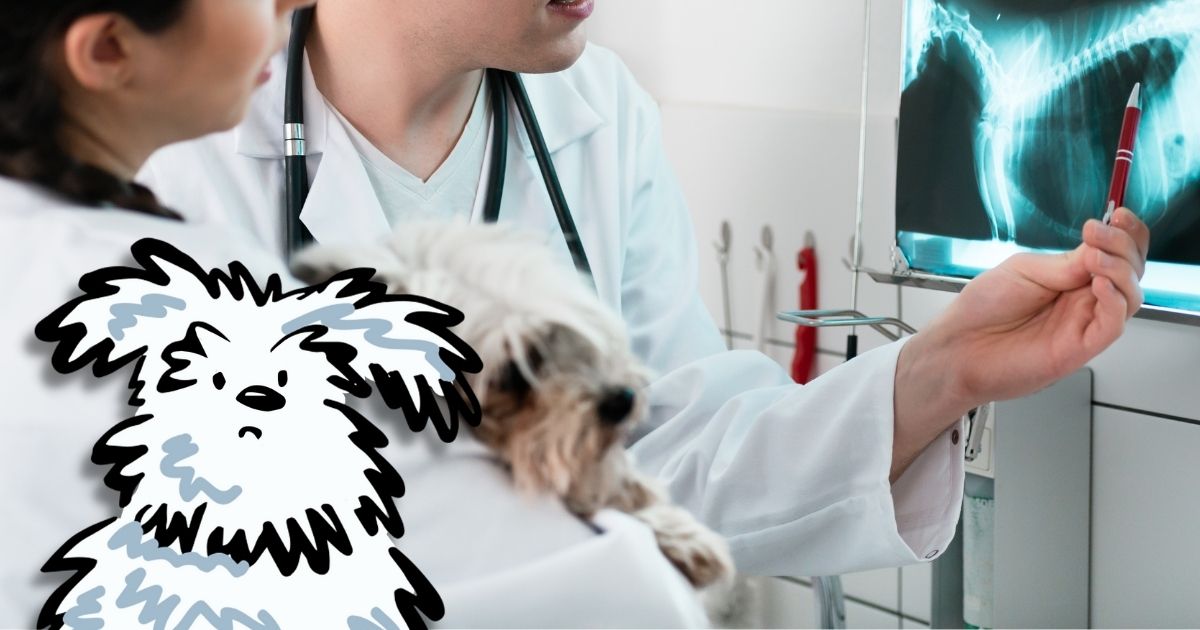
Understanding Spinal Pain in Dogs: A Compassionate Guide for Pet Parents
January 19, 2024As devoted pet parents, our furry companions bring us boundless joy. They provide unconditional love, loyalty, and endless cuddles. However, like humans, dogs can suffer from various health issues, including spinal pain. Understanding the causes, symptoms, and treatment options for spinal pain in dogs is essential for providing them with the care and comfort they deserve.
Understanding Spinal Pain
Spinal pain in dogs can be caused by various factors, such as age-related degeneration, intervertebral disc disease, spinal tumors, or even accidents. Just like humans, dogs can experience discomfort, limited mobility, and decreased quality of life due to spinal issues.
Recognizing the Symptoms

- Reluctance to Move - Dogs experiencing spinal pain might hesitate to engage in activities they once enjoyed, such as playing fetch or going for walks.

- Changes in Gait - A noticeable alteration in how your dog walks or moves, including limping or favoring one side, could indicate spinal discomfort.

- Difficulty Climbing Stairs - If your dog struggles to climb stairs or shows signs of hesitation, it could be due to pain in their spine or joints.

- Sensitivity to Touch - Dogs with spinal pain may flinch or show signs of discomfort when touched in specific areas of their body.

- Changes in Behavior - Watch for behavioral changes like increased irritability, aggression, or withdrawal. Spinal pain can cause mood alterations in dogs.

- Decreased Appetite - Pain and discomfort might lead to a decreased interest in food, resulting in appetite loss.
Diagnosis and Treatment
Thorough Physical Examination
Veterinarians will conduct a comprehensive physical assessment of your dog, observing their movement, posture, and response to touch to pinpoint potential issues.
Diagnostic Tests
X-rays and MRI scans are common diagnostic tools used to visualize the spine and identify abnormalities or injuries that might be causing pain.
Pain Management
Veterinarians may prescribe pain-relief medications tailored to your dog's condition. These medications help alleviate discomfort and improve your pet's quality of life.
Physical Therapy
Physical therapy exercises, including gentle stretches and massages, can improve your dog's mobility and reduce pain. Professional animal physical therapists can guide you in performing these exercises at home.
Surgery
Surgical intervention may be required in more severe instances. Surgery aims to address specific spinal issues, providing long-term relief and improving your dog's overall mobility.
Tailored Treatment Plan
Your veterinarian will create a personalized treatment plan based on the diagnosis. This plan may combine medication, physical therapy, and, if needed, surgery, ensuring the most effective approach to managing your dog's spinal pain.
Regular Follow-up
Continuous monitoring is essential. Regular follow-up appointments with your veterinarian allow adjustments to the treatment plan as your dog progresses, ensuring they receive the best care possible.
By recognizing these symptoms and promptly seeking professional help, pet parents can play a crucial role in ensuring their beloved dogs receive the appropriate diagnosis, treatment, and care needed to alleviate spinal pain and enhance their quality of life.
Caring for a Dog with Spinal Pain

-
Comfortable Environment - Ensure your home environment is safe and comfortable for your furry friend. Provide a soft and supportive bed, avoid high surfaces, and use ramps or steps to help them access furniture or vehicles.

-
Pain Management - Administer prescribed medications and supplements as per your veterinarian’s instructions. These medications help alleviate pain and improve your dog’s overall well-being.

-
Physical Therapy - Physical therapy exercises and massages can significantly improve your dog’s mobility and reduce pain. Work closely with a professional animal physical therapist to learn suitable exercises for your pet.

-
Maintain a Healthy Weight - Obesity exacerbates spinal problems. Consult your veterinarian for a suitable diet and exercise plan to maintain your dog’s ideal weight.

- Regular Veterinary Check-ups - Schedule regular follow-up visits to monitor your dog’s progress. Your veterinarian can adjust the treatment plan if necessary, ensuring your dog receives the best care possible.
Salmon Oil for Dogs

In addition to the mentioned treatments, incorporating salmon oil into your dog's diet can offer notable benefits for spinal health. Salmon oil for dogs is rich in omega-3 fatty acids, which have anti-inflammatory properties. These fatty acids can help reduce joint inflammation and promote overall joint and spinal health. Additionally, omega-3 fatty acids support brain health, which is vital for dogs dealing with spinal issues as it aids in maintaining coordination and balance.
Conclusion
Spinal pain in dogs can be a challenging experience for both pets and their owners. However, with timely intervention, proper care, and much love, our canine companions can lead happy and fulfilling lives despite their condition. By staying informed, observant, and proactive, we can ensure our furry friends receive the support they need to wag their tails and enjoy life to the fullest, reminding us of the incredible resilience and spirit of our beloved four-legged family members.
